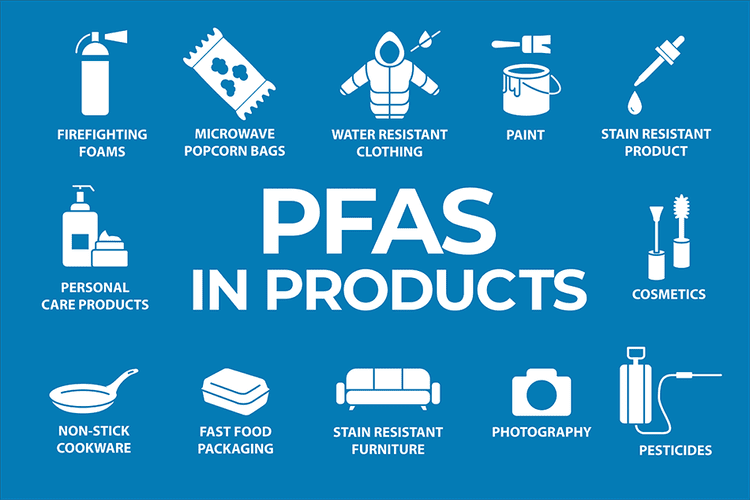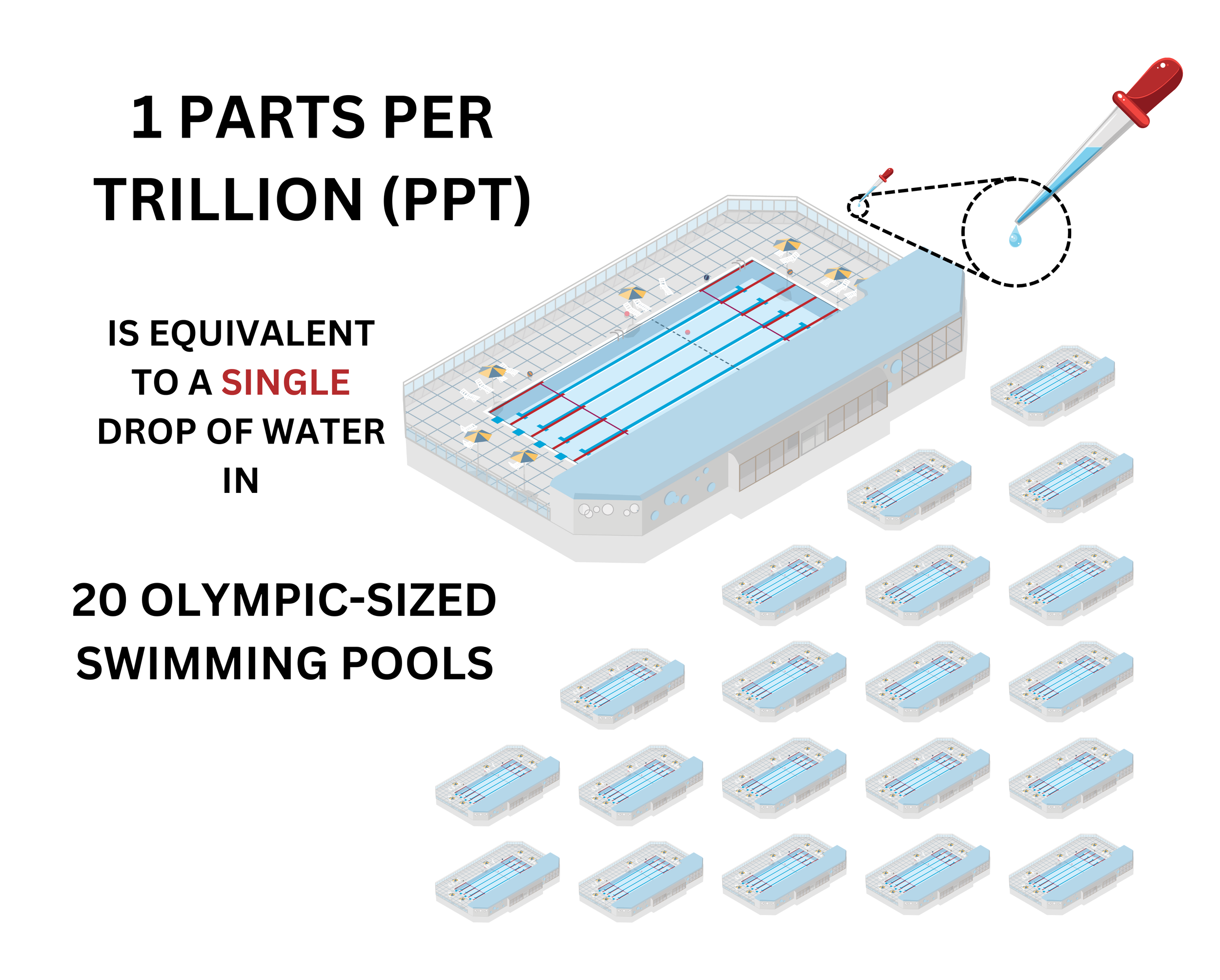
The PFAS Problem
WHAT ARE PFAS?
PFAS (Per- and Polyfluoroalkyl Substances) are a large, complex group of synthetic chemicals that have been widely used in industry and consumer products globally since the 1940s. They are often dubbed "forever chemicals" because their unique chemical structure, a chain of linked carbon and fluorine atoms, makes them extremely resistant to breaking down naturally in the environment or the human body.
KEY CHARACTERISTICS & USES
PFAS are highly stable and persistent. They bioaccumulate, meaning they build up in the blood and organs of humans and animals over time.
These chemicals are valued for their ability to repel oil, grease, stains, and water. They're found in a wide variety of consumer products and industrial processes, including:
Non-stick cookware
Stain- and water-repellent fabrics (e.g., carpets, outdoor clothing)
Food packaging (e.g., grease-resistant paper, microwave popcorn bags)
Firefighting foams (Aqueous Film-Forming Foam or AFFF)
Cosmetics and certain cleaning products.
Aerospace & automotive (hydraulic fluids, lubricant, gaskets, insulation)
Electronics & semiconductors (microchips, coatings, components)
Chemical & industrial (processing aids, filtration systems, paints, sealants)
HEALTH & ENVIRONMENTAL IMPACT
Exposure to certain PFAS has been linked to potential adverse health outcomes in humans and animals, including effects on the immune system, changes in liver and thyroid function, increased cholesterol levels, and certain cancers. Research is ongoing to determine the toxicity of the thousands of other PFAS that are or have been widely used in industry and consumer products.
Due to decades of use and their persistence, PFAS are found in water, soil, air, food, and household dust. Studies show that most people in the US have detectable levels of PFAS in their blood. Their high stability means they are difficult to remove from contaminated sites, presenting a major challenge for remediation and environmental protection efforts. Recent regulation and cleanup guidelines are set as low as in the parts per trillion (ppt), making detection and removal even more difficult.


